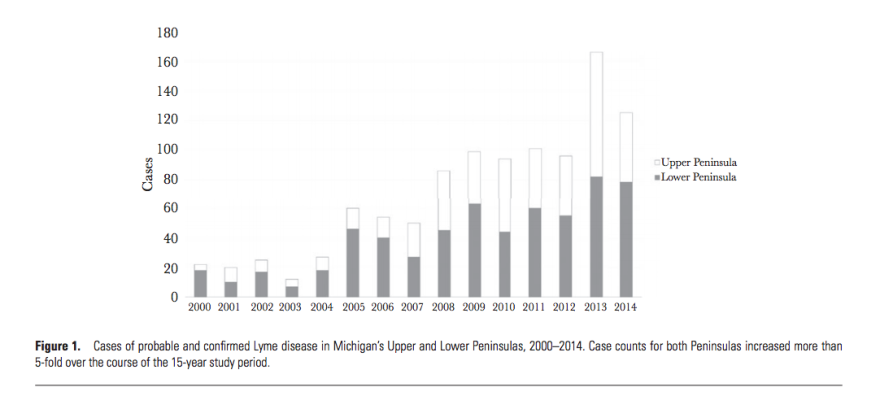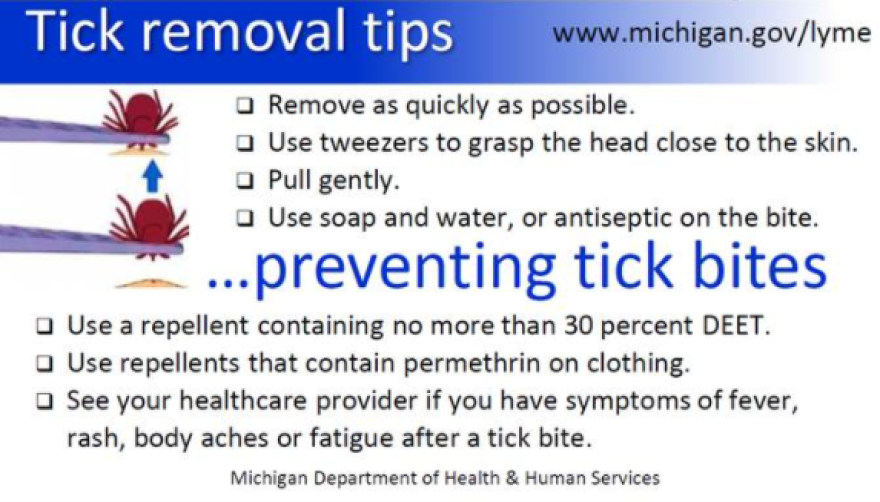Tick season is here in northern Michigan, and with it comes a higher risk of contracting Lyme disease. Lyme disease is transmitted when blacklegged ticks – commonly called deer ticks – bite humans. If untreated, Lyme disease can have serious health consequences like inflammation of the brain or spinal cord, nerve pain or short-term memory loss. Early signs of Lyme disease include flu-like symptoms and muscle aches.
Deer ticks and Lyme disease used to be rare in Michigan, particularly in the Lower Peninsula. But over the years, tick populations have expanded in the Upper and Lower Peninsulas. Populations have spread from the southwestern part of the Lower Peninsula northeast along Lake Michigan and across the state.

In the past four years, the number of reported cases of Lyme disease in Michigan has more than doubled. Ninety-eight cases were reported in 2012. In 2016, 221 cases were reported. The actual number of Lyme disease cases could be 10 times higher than those reported numbers, according to the U.S. Centers for Disease Control and Prevention.

Erik Foster, the medical entomologist with the Michigan Department of Health and Human Services, says, at the rate deer ticks are spreading, the risk of contracting Lyme disease could soon exist throughout Michigan.
"It’s really important for people to know where these ticks are in the state to take preventative measures to prevent Lyme disease," says Foster. "Lyme disease is totally treatable if you can catch it early."
He says people should check for ticks every night.
"Because if you can remove these ticks before they feed from 36 to 48 hours, even if the tick was infected, you can prevent Lyme disease," he says.
MDHHS says people can protect themselves from tick bites in a number of ways:
Avoid tick-infested areas by walking on trails and staying off overgrown grass, brush and leaf litter Check for ticks on yourself and your animals after being outdoors Use insect repellent containing DEET or Picaridin on exposed skin Treat clothes (not skin) with permethrin, which kills ticks on contact
Foster says during the summer months young deer ticks – or nymphal ticks – can be as small as poppy seeds and hard to detect. He says between 10 to 20 percent of nymphal ticks carry Lyme disease. He says adult ticks in the spring and fall can have infection rates between 20 and 45 percent.



